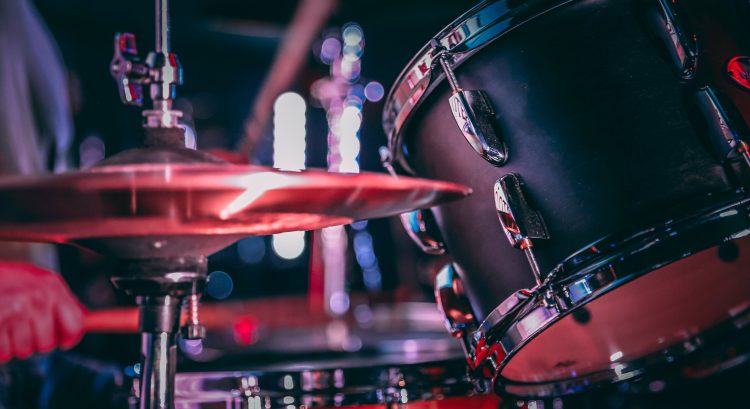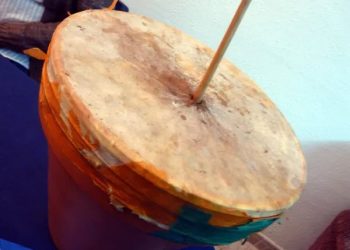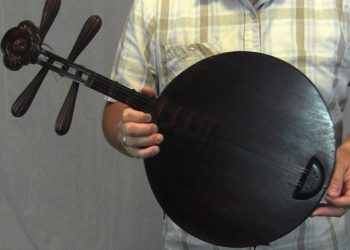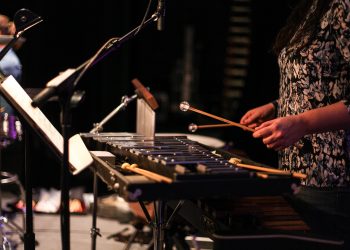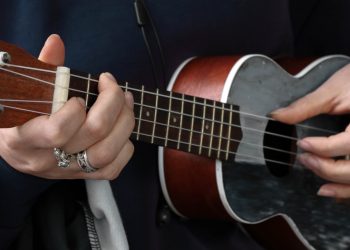Music has been a vital part of human culture for centuries, and the diversity of musical instruments is a testament to the creativity and ingenuity of musicians and instrument makers alike. From woodwinds to strings to percussion, there are countless musical instruments that produce a vast range of sounds, rhythms, and melodies. In this article, we will explore the top 14 musical instruments that start with the letter D, providing a glimpse into the fascinating world of music and the instruments that create it.
The letter D is home to some of the most intriguing and unique musical instruments, from the haunting tones of the duduk to the infectious rhythms of the djembe. Whether you are a music lover, a budding musician, or simply interested in learning about different musical instruments, this list will introduce you to some of the most fascinating and diverse instruments in the world.
With each instrument, we will delve into its history, origin, construction, and unique features, as well as its role in different styles of music. From classical to folk to jazz, these instruments have found a place in a variety of genres and cultures, making them an essential part of the musical landscape. So, let’s get ready to explore the top 14 musical instruments that start with the letter D and discover the incredible world of music!
1. Dabakan
The dabakan is a traditional percussion instrument that has been around for centuries in the Philippines. It’s a small, hourglass-shaped drum with two heads made of animal hide or plastic. The upper head is thicker than the lower one and held together by a hoop at its center. This creates an interesting tonal quality when it is played.
The player holds the dabakan horizontally between their hands and strikes both sides using sticks to create different rhythms and sounds. Different playing techniques can be used to create various musical styles, from simple beats to complex polyrhythms. Players often use cymbals or other instruments to accompany the sound of the dabakan for added texture.
The versatility of this instrument means that anyone can enjoy playing it – whether you’re just starting out learning how to play drums, or are experienced musician looking for new ways to express yourself musically. Its range of tones make it suitable for many genres, including folk music, jazz, blues, and more recently pop music.
No matter who plays it or what genre they choose to explore with it, the dabakan adds unique character and charm to any performance – making it a popular choice among players everywhere!
2. Dhad
The dhad is another traditional percussion instrument that has its origins in the Indian subcontinent. It’s a large two-headed drum with a deep, resonant tone and is usually played with both hands. The player holds the stick of one hand between their thumb and index finger while using the other to strike the head at different places or angles to create different sounds. This allows for complex rhythms to be created as well as some melodic elements to be added into pieces of music.
What makes the dhad unique from other drums is its ability to move easily between multiple musical genres such as folk, classical, and even jazz. Its versatility means it can fit into almost any genre you choose – allowing for new ways of expression through sound. Moreover, due to its size and shape, it creates an incredibly powerful presence on stage when used live – making it a great choice for performances where impactful sound is desired!
Another interesting feature of the dhad is how players use various techniques like muting and dampening during performance which helps to add extra texture and depth to the overall soundscape. This gives performers more control over what their audience hears and also helps them better express themselves musically.
Overall, whether playing solo or accompanying instruments such as guitars or tablas, this instrument adds charm and character whenever it’s heard – ensuring your listeners will never forget hearing it!
3. Daf
Building on the foundation of the dhad, there is another traditional percussion instrument from India – the daf. As its name implies, it is a frame drum with a deep, low tone and consists of either metal or wooden rings that are attached to its playing surface. It’s usually played in pairs with one player providing the rhythm while the other adds additional layers of sound by hitting various places around the frame.
The daf has become increasingly popular in recent years due to its unique ability to provide an almost hypnotic groove as well as being able to seamlessly transition between genres like folk, classical and even jazz. Its versatility means you can use it for everything from solo performances to accompanying larger ensembles – making sure your music never gets stale!
Moreover, unlike other drums which require quite a bit of force when striking them, you don’t need to apply too much pressure when using this instrument – allowing for more subtle nuances in your performance. This makes it great for adding texture and mood without overpowering the rest of your ensemble’s sound.
Thanks to its portability and ease-of-use, many modern musicians have been exploring different ways to incorporate it into their own music – creating new sounds and possibilities within their pieces. Whether used alone or alongside other instruments, this dynamic instrument will always add flavor and depth wherever heard!
4. Dahu
Another traditional instrument from India is the dahu. This two-headed drum typically has a larger and lower pitched head, and a smaller, higher pitched one. It can be played with either sticks or hands, depending on the desired sound you want to achieve. The range of tones produced by it allows for both melodic and rhythmic playing styles.
The unique combination of its two heads makes it incredibly versatile in terms of musical possibilities – enabling musicians to use it in various genres and settings. From classical Indian music to more contemporary pieces, this percussive instrument adds depth and complexity to any piece while also providing an interesting contrast to other instruments like the tabla or daf.
Furthermore, due to its size, the dahu is very portable which makes it great for jamming sessions as well as live performances. Its ability to transition between different styles without sounding out of place also means that no matter what type of music you’re creating, there will always be room for this dynamic instrument!
Overall, the dahu is an extremely useful instrument when looking to add texture and color within your compositions – allowing you to explore new sounds while staying true to your style at the same time. Whether used solo or alongside other instruments, this percussion tool will ensure that your music never fails to impress!
5. Daiko
Building on the traditional Indian instruments, there is also the daiko. This hand-held drum consists of a wooden body and two heads – usually one thicker than the other – that are struck with padded sticks or hands. It can produce an array of sounds, from low rumbling beats to high-pitched staccato rhythms.
The versatility of this instrument makes it ideal for multiple genres – whether you’re looking for subtle accompaniment in folk songs or creating powerful grooves in rock music. Additionally, its light weight makes it easy to transport, making daiko an excellent choice for street musicians as well as those who want to take their performances outdoors.
In terms of musical expression, the possibilities are endless with daiko – giving performers ample room to explore different playing styles and techniques. Whether going solo or collaborating with others, its unique sound adds another layer of energy and excitement to any performance!
Overall, the daiko is a great tool for adding texture and dimension to your compositions. With its wide range of tones and dynamic capabilities, it enables players to create captivating melodies while still keeping true to their personal style.
6. Damman
Another popular instrument used in many cultures is the damman. Also known as a frame drum, it features an open circular body with a single head that’s made out of skin or synthetic material. It’s held between the hands and struck using sticks, giving players great control over their playing dynamics while allowing them to create soft and loud sounds.
The sound of this instrument can be both subtle and powerful – perfect for those who want to add intense emotion to their music. Its smaller size makes it easy to carry around too, making it ideal for outdoor performances or accompanying other instruments during live shows.
Plus, its versatility allows performers to explore different musical styles such as jazz, blues, folk and more. As if that weren’t enough, there are also various types of finger techniques available which further widen the range of possible sounds you can produce on this instrument. With all these possibilities at your fingertips, you really have no limits when it comes to expressing yourself musically!
All in all, the damman offers countless opportunities for creative exploration – something that any musician can appreciate! Whether looking to develop new skills or just wanting to spice up their compositions with unique textures, this wonderful piece of equipment has something special for everyone.
7. Darbuka
Moving on to another instrument, the darbuka is a hand drum popularly used in Middle Eastern music. This percussion instrument typically has an hourglass shape and produces a low-pitched thud when struck with your hands. The sound of the darbuka can range from being deep and resonant to high and jazzy depending on where it’s struck – allowing players to create unique rhythms that stand out among other instruments.
Moreover, this type of drum is often considered one of the most versatile drums around due to its tunability. By simply adjusting screws at either end of the body, you can easily change up the pitch and tone produced by each hit; which means even more opportunities for experimenting with different sounds!
In addition, since this drum doesn’t require any special equipment or complex techniques for playing, anyone can get started making music right away. Plus, it’s small enough to be carried around easily – perfect if you want some accompaniment while traveling or just practicing at home.
Overall, whether you’re looking for something simple yet effective or wanting to explore new musical possibilities, then look no further than the darbuka! With its many tuning options and portability, it offers plenty of potential for creating beautiful melodies.
8. Daxophone
Continuing on with musical instruments, the daxophone is a unique instrument that produces sound through the vibration of wooden slats. This interesting design means it can be used to create an array of sounds and tones – making it perfect for those looking to explore different sonic possibilities!
Unlike many other instruments, this one doesn’t require any special skills or techniques to play; simply passing your fingertips over its surface will produce various notes depending on where you touch. It’s also highly tunable too, allowing you to adjust the length and width of each slat in order to achieve lower-pitched sounds or higher-pitched melodies.
When played correctly, the daxophone can produce beautiful drones and rhythms that really stand out among other instruments. Moreover, some experienced players even use their mouth as another tool for manipulating the pitch by humming into certain areas while playing!
So if you’re interested in experimenting with something new and creating unique sounds, then why not give the daxophone a try? With its versatility and endless potential for exploration, there’s no doubt you’ll have plenty of fun discovering what it has to offer.
9. Def
Another interesting instrument that’s worth exploring is the Def. This small, hand-held device works by producing sound through two vibrating metal plates which are held between your fingers and can be used to play melodic tunes or create different types of rhythmic patterns. With its unique design, you’ll find a wide range of sounds and textures possible with this instrument – all depending on how hard or soft you press the plates together!
The Def also offers great versatility when it comes to playing techniques; some users prefer using their thumbs while others use just their fingertips for softer notes. Additionally, various finger combinations can be employed in order to achieve more complex melodies. Plus, since there’s no need for tuning or re-tuning, you’ll have plenty of time to focus on honing your craft as a musician!
When played correctly, the Def has an almost magical quality about it; each note rings out clearly and distinctly with beautiful sustain. Whether creating ambient music or something more upbeat, this wonderful little instrument will definitely add another dimension to your compositions.
As you can see, the Def is an incredibly versatile instrument capable of so much more than meets the eye. From atmospheric drones to intricate rhythms and melodies – the possibilities truly seem endless! So why not give it a go? Who knows what amazing creations await…
10. Dhol
The Dhol is another fascinating instrument that deserves a closer look. This two-headed drum has been used for centuries in India, Pakistan, and other parts of South Asia to create a wide range of sounds – from slow and steady rhythms to fast and frenetic beats! The size of the drums can vary greatly depending on the type of music being played; some are large enough to require multiple players while others are small enough to be carried by a single person.
What sets the Dhol apart from other percussion instruments is its unique tuning system. By tightening or loosening the tension rods located at each end, you can adjust the pitch of both heads simultaneously—allowing you to easily switch between different tones within a single song. Additionally, each head also features an additional set of jingles which add extra texture and depth when playing complex patterns.
Another great thing about this instrument is how accessible it is for all skill levels – even beginners who may have never picked up a drum before! With just a few simple exercises and tips, anyone can get started quickly without feeling overwhelmed. And best of all, you’ll soon find yourself exploring new musical possibilities every time you sit down with your dhol!
So if you’re looking for an exciting way to express yourself musically, why not give the dhol a try? From traditional folk melodies to modern grooves – there’s something here for everyone! Whether playing solo or as part of an ensemble, you’ll be sure to discover plenty of joy along the way.
11. Didjeridu
The Didjeridu is an ancient and mesmerizing wind instrument that has been played in Australia for thousands of years. With its deep, resonant tone, it can be used to create a wide variety of sounds – from slow drones to fast-paced rhythms. This versatile instrument is also capable of producing some truly unique and haunting melodies!
What sets the didgeridoo apart from other instruments is its construction. The traditional Aboriginal design features a hollowed out tree trunk with beeswax applied at one end, which acts as the mouthpiece. To play the didgeridoo correctly, you’ll need to learn how to produce vibrato by circular breathing – a technique which requires constant air flow through both your nose and mouth simultaneously. Once mastered, this skill will allow you to control the pitch and intensity of each note produced.
Although playing the didgeridoo may seem daunting at first, there are plenty of resources available online to help get you started on your musical journey. You’ll find step-by-step tutorials on basic techniques such as tongueing and lip buzzing to more advanced concepts like improvisation and rhythmical accompaniment. Additionally, if you’re looking for inspiration or want to explore different genres, check out recordings by master players like William Barton or Charlie McMahon who have pushed the boundaries of what’s possible on this amazing instrument!
So why not give it a go? Whether you choose to use it in combination with other instruments or just simply enjoy listening to its soothing tones – you won’t regret taking the time to discover all that this extraordinary instrument has to offer!
12. Dizi
Moving on from the didgeridoo, we come to the dizi – a popular Chinese flute. This instrument is made up of two main components: a bamboo tube and six finger holes. The sound it produces has been described as ethereal, with its gentle timbre evoking images of peaceful landscapes and serene rivers.
The dizi is an incredibly versatile instrument that can be used in many different musical genres, including classical, folk and contemporary music. Its melodic qualities make it perfect for expressing emotion through tone and pitch, while its high volume output makes it suitable for both solo performances or accompaniment in larger ensembles. With practice, one may even learn to incorporate special effects such as vibrato and glissando into their playing style!
Because the dizi comes in multiple sizes and styles, there are options available for everyone – from beginners to experienced players. Whether you’re looking for something basic or more ornate with intricate carvings and decorations, there’s sure to be something that suits your needs. Taking lessons from a qualified teacher will also help ensure that you get off to a good start by learning proper fundamentals like posture and breath control.
What sets this enchanting instrument apart is its ability to transport us back in time – connecting us to our ancestors who first discovered these sounds centuries ago. So why not take the opportunity to discover what it has to offer? Once you’ve mastered the basics of playing the dizi, you’ll never look back!
13. Double Contrabass Flute
If you’re looking to take your flute playing to the next level, then consider the double contrabass flute. This impressive instrument is twice as large as a regular concert flute and produces an even bigger sound! Its range of notes goes down to low C below middle C, making it perfect for creating powerful bass lines or adding depth and richness to any piece.
The unique shape of this instrument also helps ensure that each note is played accurately, while its robust construction makes it ideal for outdoor performances in all conditions. The larger size can take some getting used to though – so if you plan on investing in one, be sure to get hands-on practice before taking the plunge.
But don’t let its intimidating size scare you away – with enough dedication and commitment anyone can learn how to play the double contrabass flute. Start by finding a good teacher who can provide guidance on proper technique and posture; from there you’ll develop the skills needed to advance your playing ability over time. Before long, you’ll be producing beautiful music from this awe-inspiring instrument!
Achieving mastery of this majestic instrument will bring immense satisfaction both musically and emotionally. You’ll unlock new possibilities for expressing yourself through song and have access to sounds previously thought unattainable. So why not give it a try? With practice and patience, soon you too could be mastering the wonders of the double contrabass flute!
14. Drum
The drum is an incredibly versatile instrument that can be used to create a variety of different sounds. From its powerful boom and thump to its softer, more delicate tap and tinkle, the drum is renowned for being able to produce some truly mesmerizing melodies. It’s also a great way to let off steam – with enough practice you’ll be able to keep a steady beat and improvise around it too!
No matter what style or genre of music you’re playing, learning how to play the drums will open up all kinds of creative avenues. You’ll find yourself feeling energized as you learn new rhythms and explore different techniques; plus your coordination will improve with every session spent behind the kit. Aspiring percussionists should note that proper technique is essential when it comes to mastering this instrument – so seek out lessons from qualified instructors if possible.
Playing the drums isn’t just about keeping time though – it’s also about interpreting emotions through sound. With practice, you’ll gain control over dynamics like volume and pacing which can help convey emotion in ways words never could. Then there are special effects such as rolls and flams which add texture and complexity – perfect for adding interest to any piece of music!
At the end of the day, learning the drums takes dedication but offers immeasurable rewards both musically and personally. So why not grab those sticks? Before long, you’ll be making beautiful noise with one of mankind’s oldest instruments!
